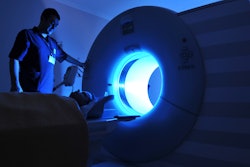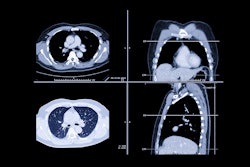The global medical imaging community has paid tribute to Willi Kalender, PhD, the renowned medical physicist who died on October 21 at the age of 75.
"Willi was a pioneer in every sense of the word. He is the father of contemporary CT imaging -- and thus of clinical radiology as we know it today," Christiane Kuhl, MD, PhD, told AuntMinnie.com on November 4.
Much of CT's dominant position in medicine is attributable to the diagnostic power of modern multiphase CT, which includes CT angiography and all current clinical applications of CT, and this clinical use of CT is attributable to Kalender, added Kuhl, who is head of radiology at University Hospital RWTH Aachen, incoming president of the German Roentgen Society (DRG), and vice-president of the European Society of Breast Imaging.
 Willi Kalender, PhD. Courtesy of National Academy of Engineering.
Willi Kalender, PhD. Courtesy of National Academy of Engineering.
"Willi was the one to invent helical CT, the type of CT which is used today for all whole-body applications of clinical radiology," she said. "Before his groundbreaking work, there was no such thing as whole-body imaging within one breath hold or capturing different vascular phases (arterial, portal, venous) or multiplanar reconstructions. Lesions were missed because patients could not breathe so reproducibly that sections would not always cover the intended position."
Another major contribution was Kalender's role as the developer of the first clinical photon-counting CT system dedicated to breast imaging, and radiology must commemorate his work, she continued. "Willi's contribution to modern medicine is huge. It is so important -- it would have been worth a Nobel prize."
Father of spiral CT?
Kalender was not the first to experiment with spiral CT (which was almost simultaneously done by engineers at Toshiba, Siemens, and Philips), but he was the one who recognized its full potential and made sure that it was implemented in clinical CT scanners, according to Mathias Prokop, MD, PhD, chair of radiology at Radboud University Medical Center in Nijmegen, the Netherlands.
"He therefore can be considered the father of spiral CT. Without him, these developments would probably have taken much longer to make it into clinical practice. This single contribution has changed CT scanning forever," he said.
Kalender contributed significantly to the development of the first wave of dual-energy techniques in the late 1980s, and he was at the forefront of optimizing spiral and multislice CT scanning techniques along with his group at the University of Erlangen, which he made into the leading group in CT physics worldwide.
"He was excellent in finding and binding talent," Prokop said. "He was a strong-willed person with clear ideas of what was right, but he was always flexible enough to learn from ideas of others. He had a strong stage presence as a speaker but was a great person to hang out with. He loved traveling and loved conferences. Deeply devoted to his family, he regularly included his wife in his travel plans."
Kalender's final contribution was the development of a photon-counting spiral CT scanner for mammography, added Prokop, who is second VP of the European Society of Radiology (ESR) and president of ECR 2027.
Momentum for CT
Stephan Achenbach, MD, past president of the European Society of Cardiology, told AuntMinnie.com that CT used to be regarded as static by many people. "It has had tremendous momentum over the past couple of decades, with substantial technical evolution. Willi Kalender's legacy is this momentum that we feel as much today as we did many years ago. He taught everyone around him to see the clinical potential of improved CT technology."
Achenbach, who has been chair of cardiology at the University of Erlangen since 2012, said he has always been deeply impressed by how much Kalender cared about the clinical applications of his contributions to CT. "Any time I was in his office, the clinical value of cardiac CT was at the center of the conversation, and it captured all of his interest."
Wolfram Veitl, country manager of Menges Medizintechnik Schweiz AG, Zürich, also has positive memories of working with Kalender. "Unforgettable -- all the conversations during international congresses such as the RSNA in Chicago, the International Society for CT meetings in San Francisco, and the customer events of Siemens, where Prof. Kalender was always open for advice, tips, or just a great story."
Kalender was one of the pole stars in my life and will be dearly missed, according to Tolga İnal, PhD, from the Department of Electrical-Electronics Engineering Ankara University School of Engineering, Ankara, Turkey. "I'll never forget our Bertrand Russell books discussion while walking to lunch with you in Erlangen. When I was hesitant to drink beer during lunchtime, I remember you saying: 'It is the amount of dose that matters, not the drink itself!' You were always funny, caring, and resourceful to your students. I was lucky enough to get to know you in person. RIP."
According to a tribute from the ESR, "Prof. Kalender significantly influenced the field through his groundbreaking research and leadership. His innovations — like spiral CT and advanced dose reduction techniques — transformed imaging quality and safety. ... He served as the section editor of European Radiology's physics section until 2010. He was an honorary lecturer at ECR 2002 and was awarded ESR honorary membership in 2010. He leaves a lasting legacy in radiology and beyond."
 Willi Kalender, PhD, and close colleagues at RSNA 2014. From the left: Kurt Dollhofer (CEO, Venturetech, died 2015), Franz Viehböck (CTO, Berndorf AG), Willi Kalender, and Wolfram Veitl. Courtesy of Wolfram Veitl.
Willi Kalender, PhD, and close colleagues at RSNA 2014. From the left: Kurt Dollhofer (CEO, Venturetech, died 2015), Franz Viehböck (CTO, Berndorf AG), Willi Kalender, and Wolfram Veitl. Courtesy of Wolfram Veitl.
In 2016, he was elected to the National Academy of Engineering for "development of spiral CT methods that enable modern high-speed 3D medical imaging with x-rays."
Kalender's other main fields of research were radiation protection and the development of quantitative diagnostic procedures, for example, for the assessment of osteoporosis, lung, and cardiac diseases, noted the International Society for CT. "His work is documented in more than 900 scientific papers, more than 300 original publications among these, and more than 30 patents. He organized and hosted numerous international workshops and conferences, among them the World Conference of Medical Physics in 2005 in Nuremberg."
He remained constantly curious throughout his career, as typified by his scans of a historic lyre, a stringed musical instrument. "Of course, we usually examine people, but we have also examined art and electronic objects," Kalender said. "Non-destructive material testing is the key phrase!"
His wife Marlene and their three children (Benjamin, Björn, and Christine) have opened a page on Memorialsource.com to have one central point for all memories, stories, appreciation, and anecdotes.
A funeral service and burial will take place on Friday, November 15 at 2 p.m. in the Martinskirche Möhrendorf, Kleinseebacher Str. 19, 91096 Möhrendorf, Germany. The family has requested that any donations should be sent to the Hospice Association Erlangen e.V. in support of the care of (breast) cancer patients.
To visit a tribute board for Kalender, click here.





















